I am in Cornwall this weekend. My mother has moved house, which means I, as the gardener in the family, have another garden in my life.
Well, I say garden: it’s more of a green space carved out of the wildness. The West Country is gloriously, magnificently untameable: from my crazy acre of hedgerows and hazel in Somerset to this small patch of wildflowers and hawthorns buffeted by coastal winds, you are never under any illusion as to who’s in control here.
Mum’s garden has Cornish hedges on two sides. It’s the first time I’ve encountered these at close quarters, though I’ve passed by them many times on my countless visits to Cornwall over the years.
Cornish hedges have been here forever: they define the county, like dry stone walls in Yorkshire or hedgerows atop banks in Somerset and Devon. They’re somewhere between a wall and a bank – the sides are made of stone, packed with earth in the middle. This is then capped with big flat stones and topped off with a few inches of turf.
Cornish hedges are famous for their wildflowers, and so it is with my mum’s hedges: all sorts of little ferns, woundworts, primroses and a lovely low-growing white wildflower I can’t identify yet. We may add more as the years go by.
But the reason for telling you all this is that they’ve also been invaded by brambles over the years as the previous owner of the house hasn’t thought to remove them. Though brambles are often wonderful for wildlife, here they are out-competing the wildflowers and gradually pulling the Cornish hedge apart. Guess who got the job of putting it right.
Removing brambles is one of those jobs that looks really daunting but is actually quite easy as long as you have the right tools. You need a good pair of secateurs, and – crucial, this – a mattock, preferably an iron-bladed one with a wooden handle. It needs to be heavy.
I donned my gauntlets (I like the Briers ones with the suede arm protectors) and cut back or pulled the stems back till I had reached the source – that point where brambles send out all their stems from, always larger and more dense than where they re-root into the ground.
Under this point is a ‘knuckle’ – a lumpy central root. You want to cut the bramble out underneath this knuckle, and this you do by swinging the mattock into the ground at an angle to slice it through underground. If you get the angle right you don’t have to dig, or even remove any other vegetation particularly. You just chop away the root and it pulls out quite easily and with very little actual effort or force: the weight of the mattock does the job for you. I cleared the whole hedge in about two hours of steady work and barely broke a sweat (this is not boasting: I am of average fitness but no gym bunny).
Otherwise my gardening and writing life this week has been one of slowly subsiding into what can only be described as autumn.
I am writing the proposal for book no.5, even as no.4 makes its way slowly to the printing press (or whatever they use these days: software, no doubt. I sometimes mourn for the reliable solidity of how things used to be).
The harvest continues, with little bits of red wool popping up here and there to remind me which stand of beans not to pick so I can save those for seed. I will bring you my failsafe way to collect tomato seed later this week, with a bit of luck – it takes minutes and is so much easier than the standard, super-complicated advice to wash the seeds (for goodness’ sake – who washes a tomato seed?!)
The toms are fruiting like crazy right now so I am picking and cooking down to freeze in batches of 400g (that’s tin-sized quantities for easy use in winter recipes). Now I’ve tasted them all I’ll fill in the Varieties Database for this year – adding one which a friend is growing right now which is quite the largest tomato I’ve ever seen. It’s a modern beefsteak, so grows this big without cracking and produces more fruits to the plant than heritage varieties: it loses a little on flavour compared to the real beefsteak classics like Marmande or Costoluto di Fiorentino but my, it’s a heck of a tomato.
I am having a little trouble getting my winter salads started, mainly because the pesky slugs are so rampant this year: this weather, with long spells of rain keeping everything damp combined with glorious sunshine to promote endless luscious quantities of greenery, has been slug nirvana. So they keep coming out and nicking my just-emerged lettuce seedlings.
Well: I did have dark thoughts about slug pellets then realised I could just move the seed trays. So they are now indoors with me, on the windowsill inside the house, and doing much better. Once they’re large enough to prick out and can withstand a little slug damage I will return them to the fray, in the hope that they’ll still have time to get big enough to pick by winter.
Elsewhere, the squash are ripening and up on bricks so the air can circulate beneath the fruits; and I am digging up the last of the potatoes and clearing the bed to make way for next year’s onion crop. This particular bed is infested with bindweed so I am planning a stint of cardboard-and-mulch suppression to try and knock it back a bit: I will be bringing you the details later, so watch this space!
So how have things been in your garden? Is the harvest going well? Which seeds have you saved so far this year? And I’d really love to know your favourite slug repelling strategy….




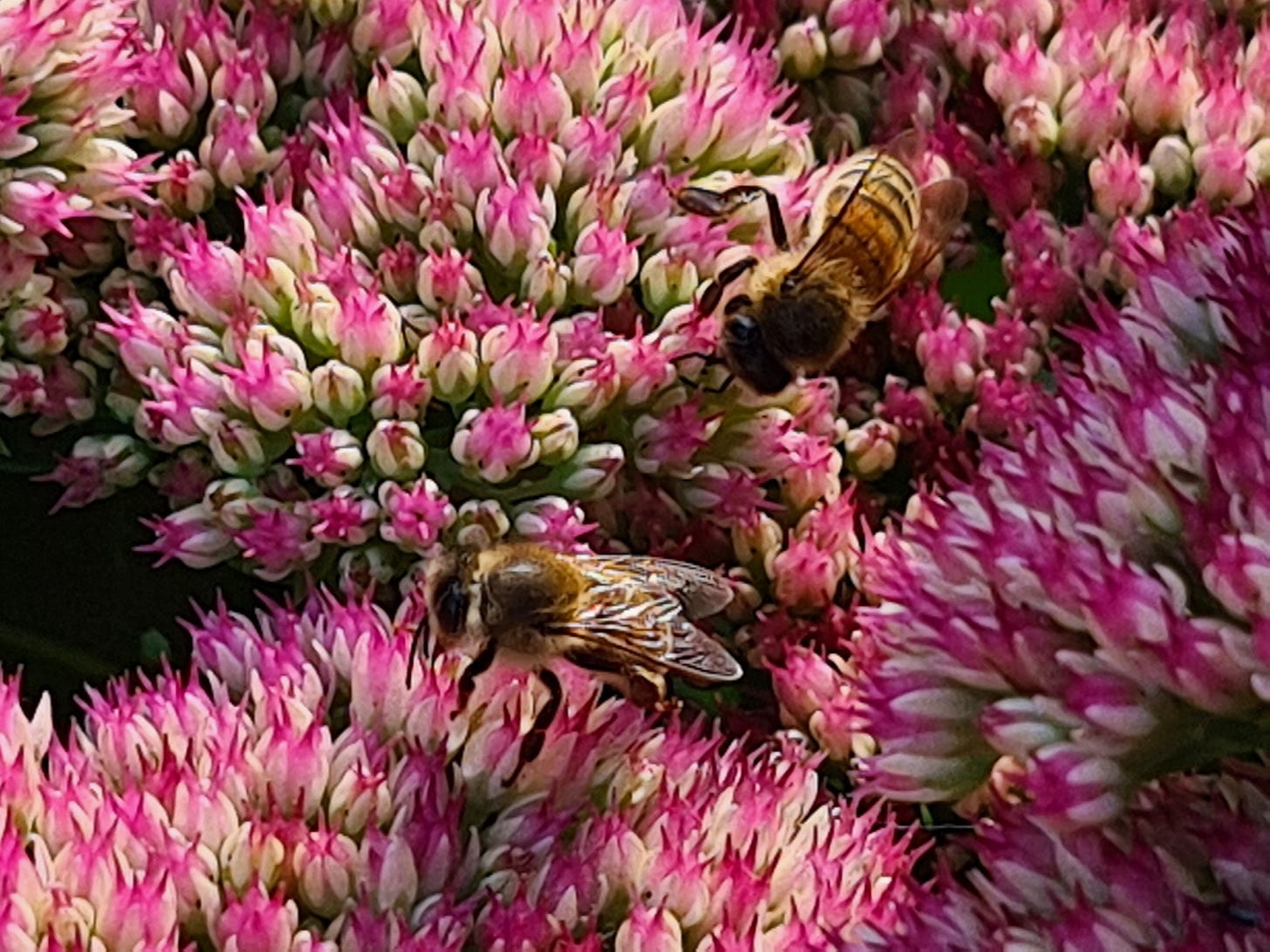
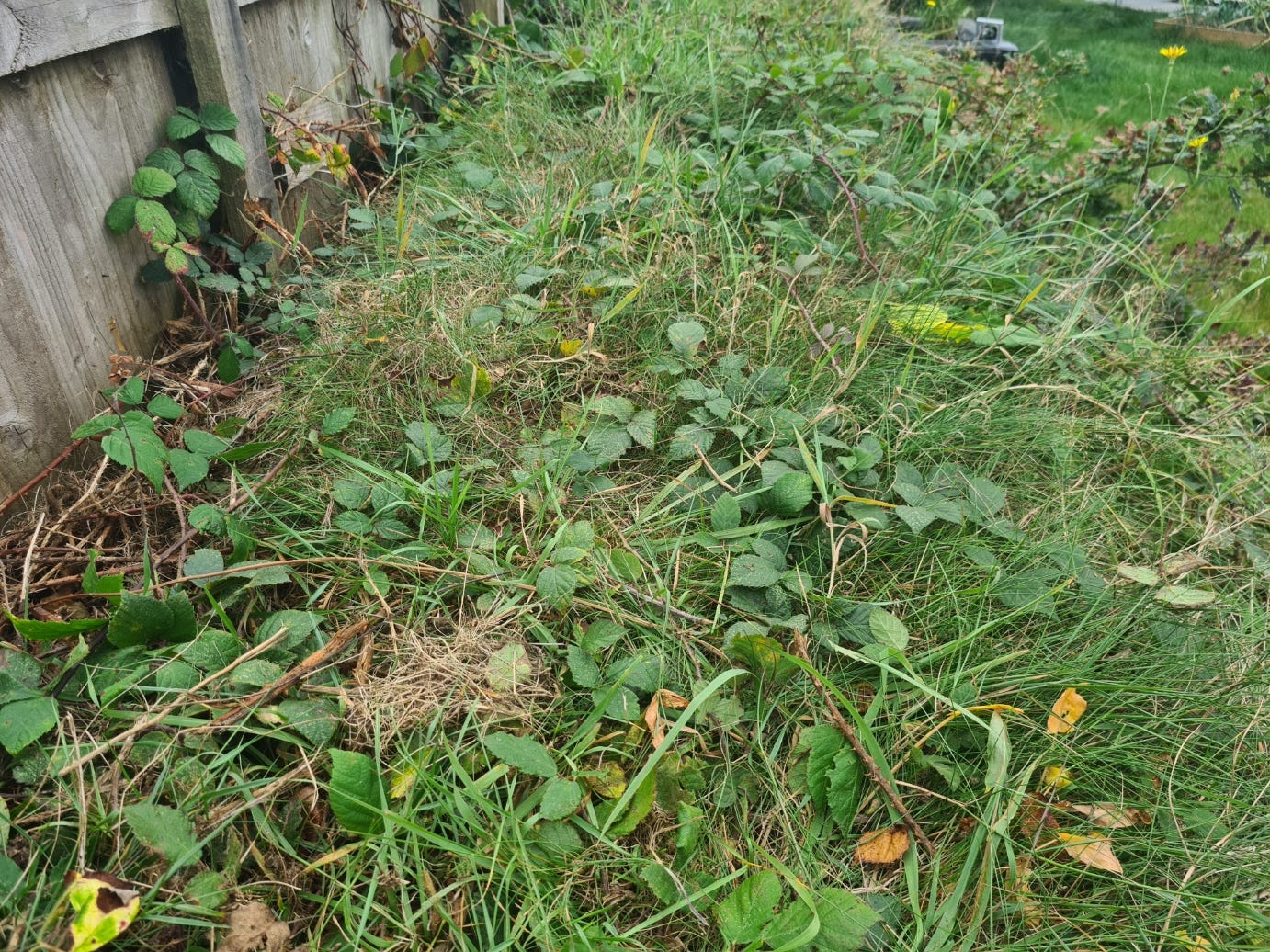
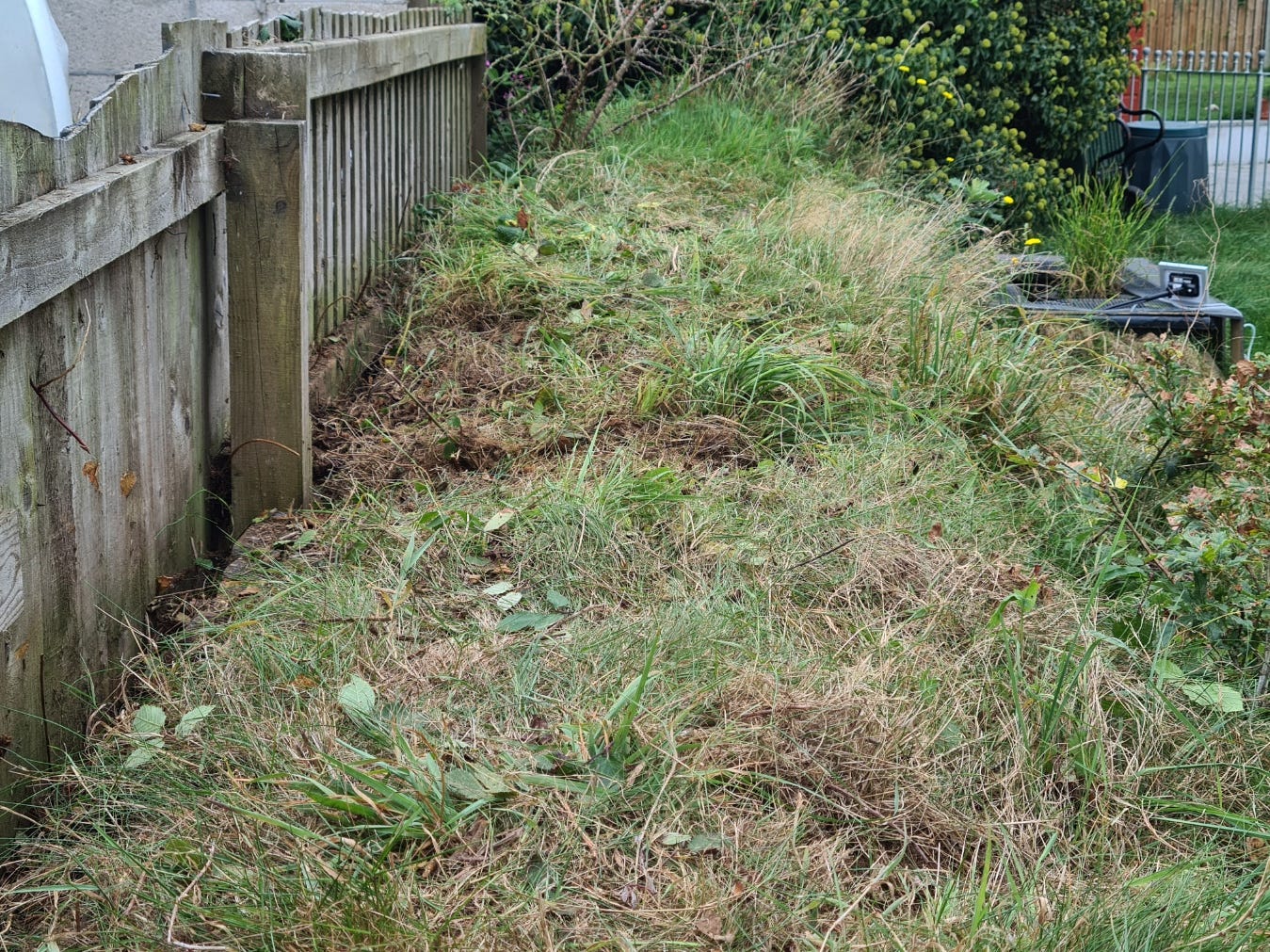
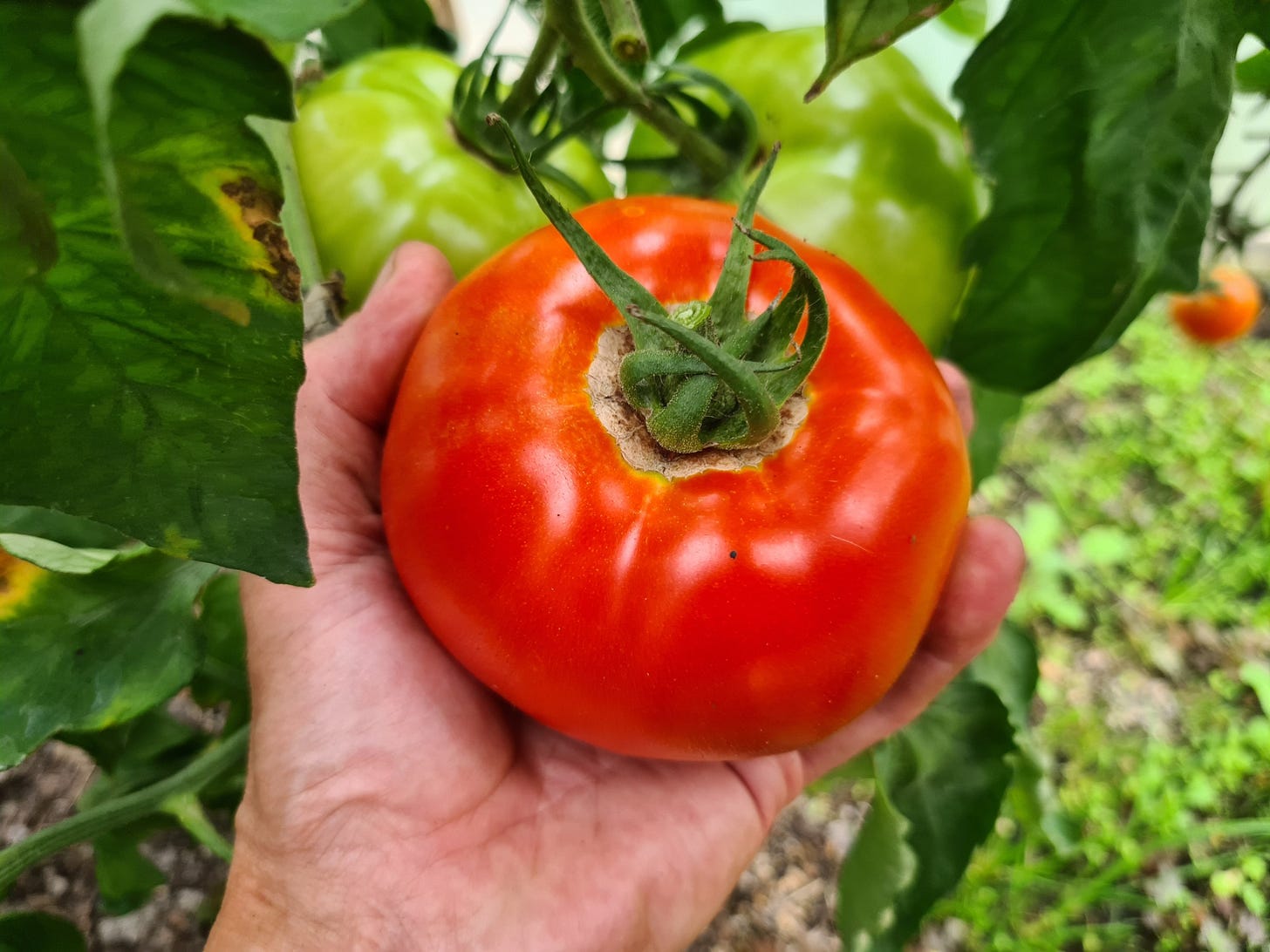
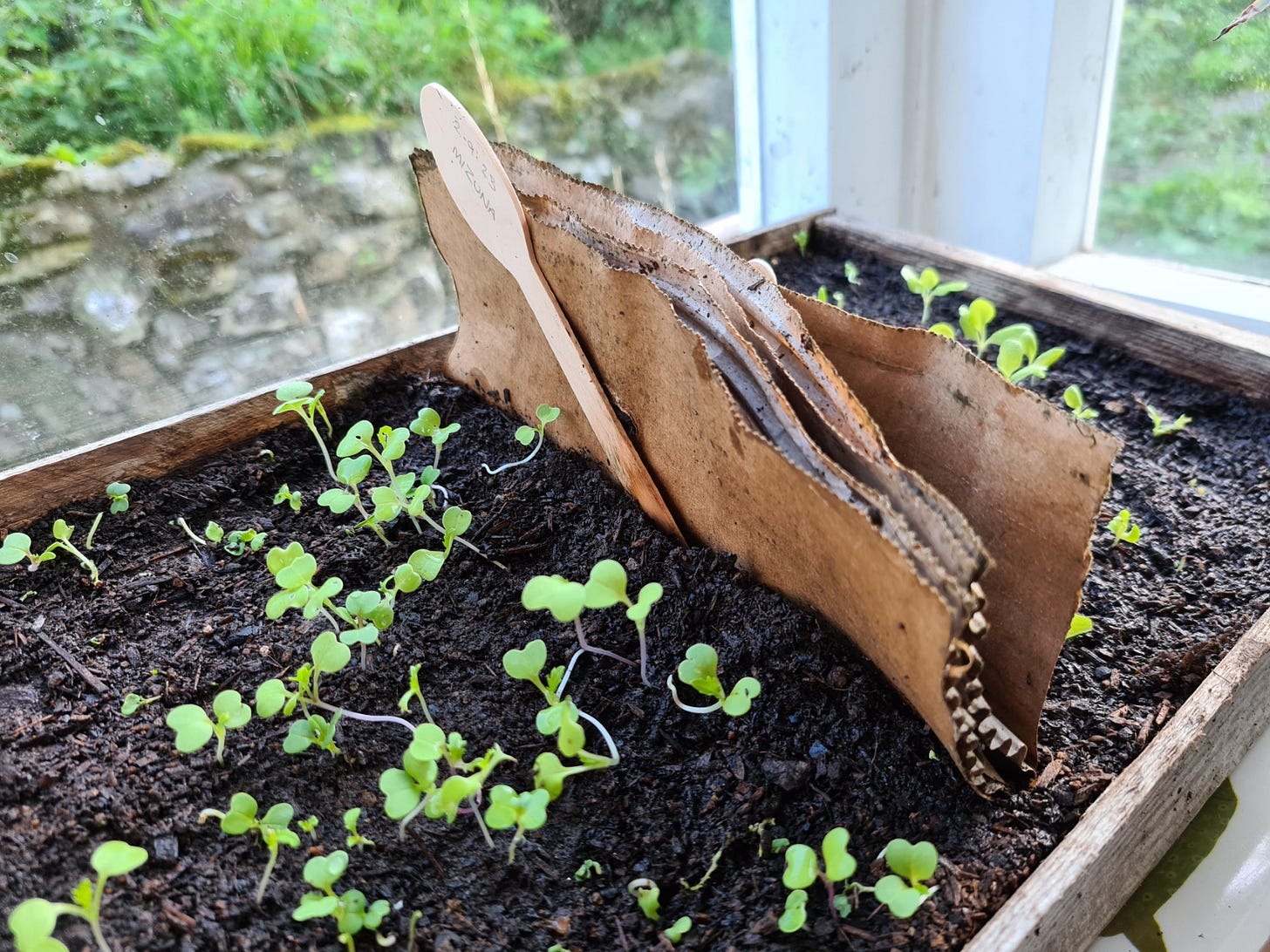
Fab looking tomato. Orange Queen (Big), Quadro (Plum) and Sunbaby (Yellow Cherry)doing ok here. Saved Seeds from the first 2. Would love an easier way. Costa Lucca and Maryglobe (beeefsteak but odd shapes) very tasty, but not sure where the seeds came from so not saving them. Peppers very slow. King Edward and Apace Potatoes in buckets did a decent crop too.